Incl: Arrau “0” • Hungerford • Gieseking “Saarbrücken”• Gieseking “0” • Gilels • Gould • Kempff “0” • Richter “Philips” • Richter “Prague” • Richter-Haaser • Serkin “CBS” • Solomon
Having listed all the complete* recordings of the Beethoven Sonatas, it is high time to list the “great near-complete”** such cycles. One might argue that Wilhelm Backhaus II and Claudio Arrau II also belong in the category of the near-complete (this is the asterisk above), seeing how both sets had to be patched with earlier works to be complete… but at least they were able to be patched and in my mind—which is all that counts for this survey—they are “as-good-as-complete cycles”.
In many of these incomplete cases, death was the limiting factor. Not for the great Solomon, now hardly known in continental Europe, who was incapacitated by a stroke after recording 17 sonatas for HMV at around the time Gieseking was recording his. Serkin elected not to record those sonatas he didn’t, and Richter didn’t like recording in the first place and also chose not to take all the sonatas into his (vast) repertoire.
Not surprisingly, not all these incomplete sets—especially the very early ones—are available.
The incomplete cycles are listed in order of completeness.
* I made exceptions there for Backhaus and Arrau for the reasons stated above, but not for Gieseking “Saarbücken” for the reasons stated below.
** I make a cut-off point at “at least 9 sonatas” – and they have to be recorded with at least some semblance of ‘cycliality’… which is to say: Not random performances, here and there, picked up and thrown together to perform something approximating a cycle.
08/22/2018: William Kempff's 'wartime sonata cycle' of 16 sonatas (well above the threshold) has been released by Appian Publications & Recordings and added below. This catches Kempff at the height of his pianistic maturity, which was, unfortunately, marred by the war. Everything we know from thereafter is already late Kempff. (Not that there's anything wrong with that.)
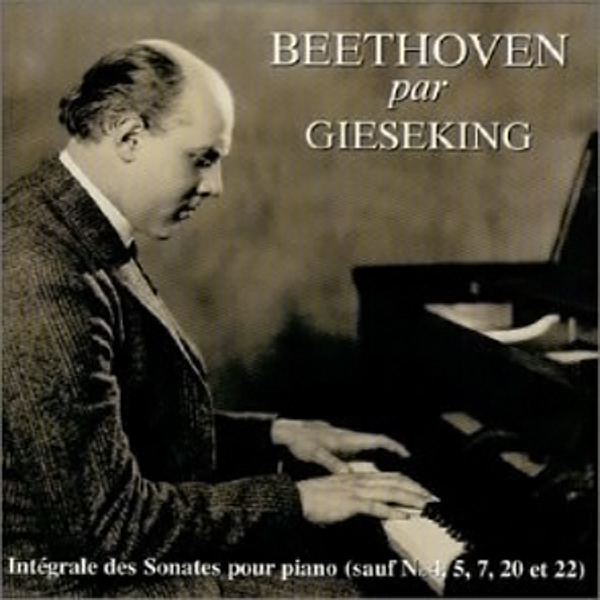  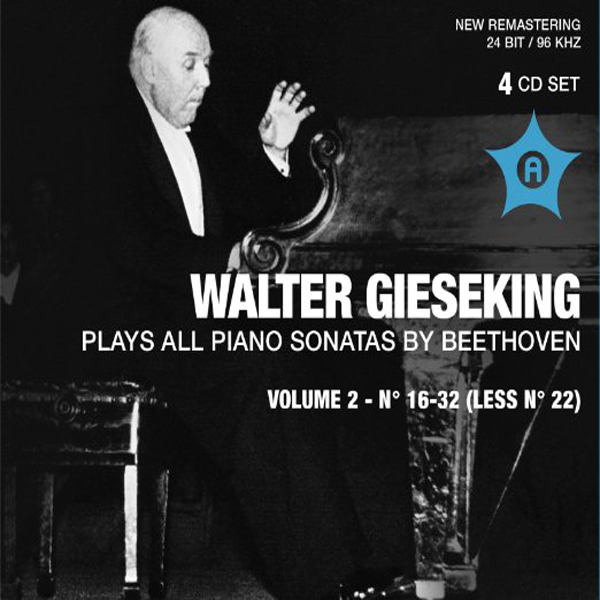 | Walter Gieseking “Saarbrücken” (27 / 27 + 4*) 1949/50 (+ 1956*) - Tahra / Andromeda Neither of Walter Gieseking’s cycles are complete to my mind. Obviously not his HMV/EMI cycle, which only includes 23 Sonatas, and neither his “Saarbrücken Cycle”, even though he recorded all but one of the sonatas. That’s firstly because the latter, 31-Sonata cycle is live, taken largely from 1949/50 radio broadcast tapes of so-so quality, and issued fairly late and never on a major label. That missing sonata is No.22, op.54, he never seems to have recorded, although it’s not as though he didn’t play it. (As the Naxos biography points out, Gieseking was perhaps the first to perform the stunts of playing “the complete Beethoven piano sonatas in six recitals”, still during the First World War!) That set is available on Andromeda with 31 Sonatas (Nos. 4, 5, 7 and 20, for which the radio tapes are lost, are taken from the London tapes) and formerly on Tahra, where Nos. 4, 5, 7, 20, and 22 remain missing. Availability:
| ||||||||||||||||||||
 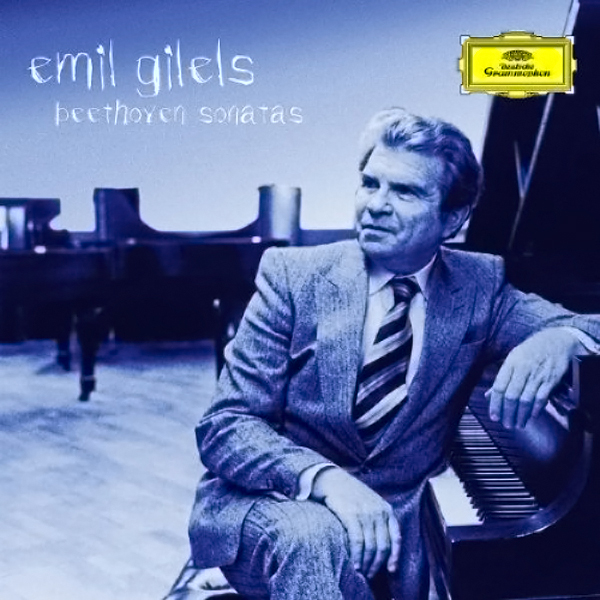  | Emil Gilels (27) 1972 – 1985 - DG An earlier German version of Emil Gilels’ Beethoven sonatas (as recorded for Deutsche Grammophon) claims, surprisingly, to contain “29 Sonatas”, but that number is arrived at by counting the two Electoral—WoO 47—sonatas which are, in any case, also included in the newer set. Both sets contain in fact sonatas Nos. 2-7, 8, 10-21, 23, 25-31, as well as the Eroica Variations and said Electoral sonatas. The missing sonatas are Nos 1 (op.2/1), 9 (op.14/1), 22 (op.54), 24 (op.74, “A Thérèse”) and 32 (op.111). There are no other instances of these sonatas in Gilels recorded output that could make a patch. All the same, this is widely regarded as one of the finest sets, complete or not, and it certainly is one of the few really high-caliber, reasonably complete sets of a Russian-school pianist of the 20th century. Availability:
| ||||||||||||||||||||
  | Wilhelm Kempff “0” (“78s”) (25) 1927-1942? - Polydor Wilhelm Kempff recorded 25 sonatas in the 20s through the 40s for Polydor (on electrical 78s), even before Schnabel did his cycle, and they are near impossible to get a hold of. (Opp.2/3, 22, 27/1, 28, 31/2, and 101 missing from making the cycle complete.) They had been available, briefly, from the sketchy Dante/Lys label on 9 individual discs. (Kempff even recorded eight of the sonatas earlier than that, in 1924-25… on shellacs.) Availability:
| ||||||||||||||||||||
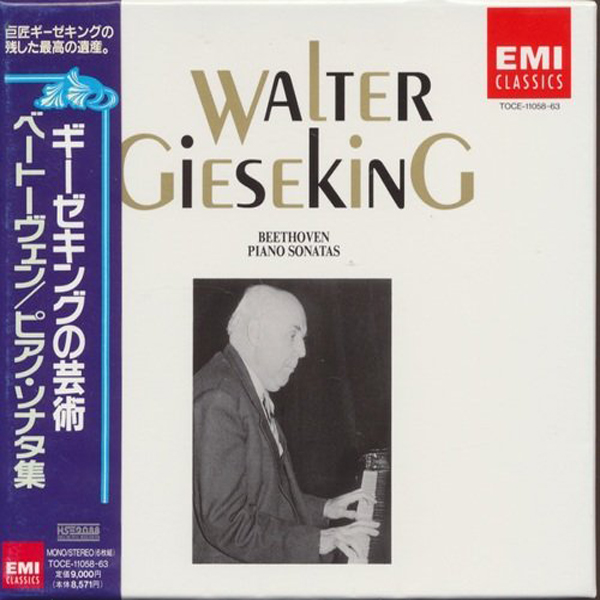 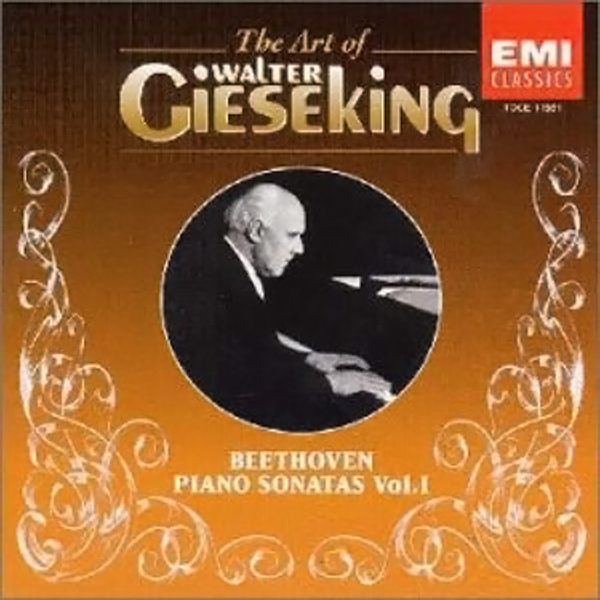 | Walter Gieseking “HMV” (21 + 2) 1956 (+ 1951) - HMV/EMI/Toshiba For his studio-cycle with HMV, which he recorded in his late 50s all the way until his premature death related to his pancreatitis, Gieseking managed to put down 21 sonatas. The incomplete set has, to my knowledge only been published on LP and, on CD, in Japan (Toshiba/EMI) where the individual discs and a six-CD set are spottily available. The sonatas recorded at Abbey Road were Nos. 1-15, 17-20, 30, and 31. Walter Legge recorded Gieseking earlier in Zurich, in 1951, for Columbia/EMI. These performances of Sonatas Nos.22 and 23 are included in the Toshiba/EMI set. Gieseking was said to excel in the studio and certainly the sound, to the extend I’ve been able to sample it on the re-issues available in the West, is a considerable improvement over the radio tapes. The haphazard EMI “Icon” box of Gieseking’s is no good; throwing in just bits and pieces of what he’s recorded. Too bad there isn’t a gorgeous collectors’ set either by Warner or some other high-production-value company to offer a well-remastered to the connoisseur. Availability:
| ||||||||||||||||||||
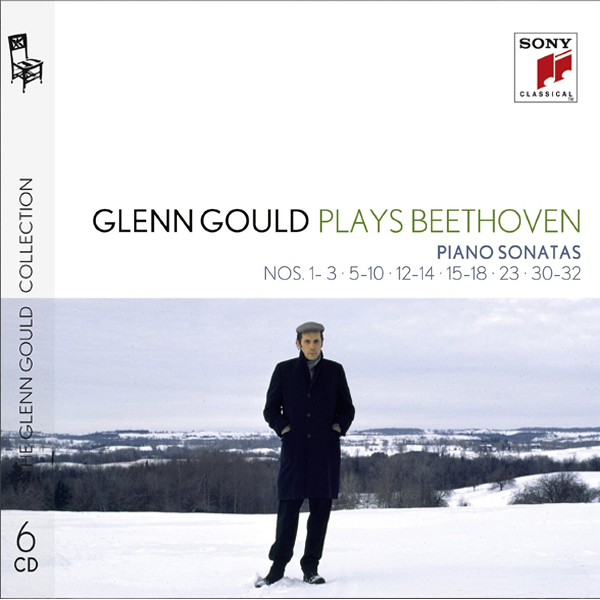 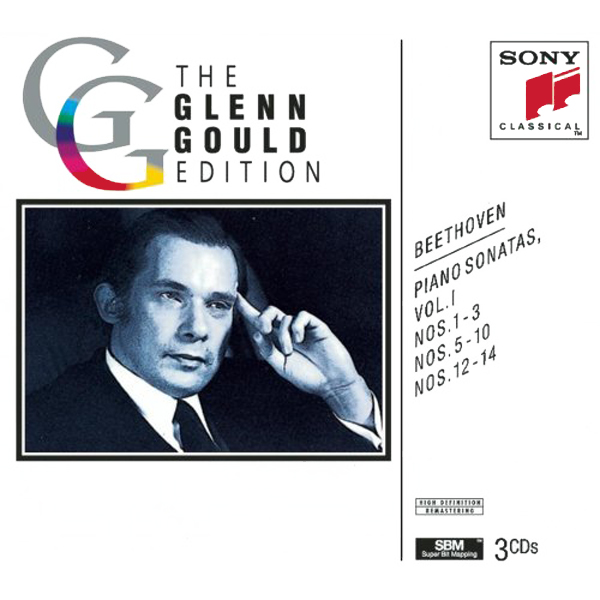  | Glenn Gould (20 + 2) 1956 - 1979(?) - CBS/Sony If Mel Brooks were a music reviewer instead of talented, he might have said that what Glenn Gould did to Beethoven is what the Germans were doing to Poland. Certainly it’s, ahemm… unique Beethoven, much like his Mozart is between marvelous, odd and gawdawful, and I’ve also heard the opinion expressed that we ought to be thankful for every sonata (12 in this set, 7 over the course of his career) that he didn’t record. [Nos 11, 20-22, 24-27, and 29 are missing from this Columbia/Sony set; Nos. 24 and 29 can be added via a Sony release; Nos. 4, 19, and 28 are only available on CBC recordings.] That’s largely hyperbole and an attempt at wit, and even if there’s something to every joke, Gould’s Beethoven, though "[exemplifying] the perversity and moral turpitude of much of Gould’s artistry" (A.Kuerti) is fascinating and certainly technically above criticism. Richard Brody (The New Yorker) wrote about the Gould-Beethoven relationship that the composer’s “looser structures and wider interpretive margins let Gould’s contrapuntal brusquery veer into a fascinatingly wild aggression that seems utterly apt to Beethoven’s inner world”. It’s divisive stuff, but middle ground can be found by agreeing that his Beethoven had less to do with Beethoven and more to do with Gould. Who wouldn’t want to have listened to it at least once?! Gould officially released 20 sonatas: the ones on this and the older, two-volume set. Two previously unreleased sonatas (a Hammerklavier radio-broadcast from Toronto, 1970 and a “scandalously offensive” [A.Kuerti] À Thérèse, op.78 from New York, 1968) can be found on this supplementary disc. Just Sonata No.24 is included in this addendum to the newer edition, along with Gould’s recordings of the Bagatelles and various (non-Diabelli) Variations. Perhaps no harm missing out on either of those, as Anton Kuerti explains in this lovely piece for Review Canada. The bare-bones Masters Edition is not the way to go, as it doesn’t contain all the sonatas Gould recorded in the studio but only 12… but it might suffice as a way to get the Five Piano Concertos (with Bernstein, 1-4 and Stokowski, 5), if the total lack of documentation doesn’t turn you off. Availability:
| ||||||||||||||||||||
    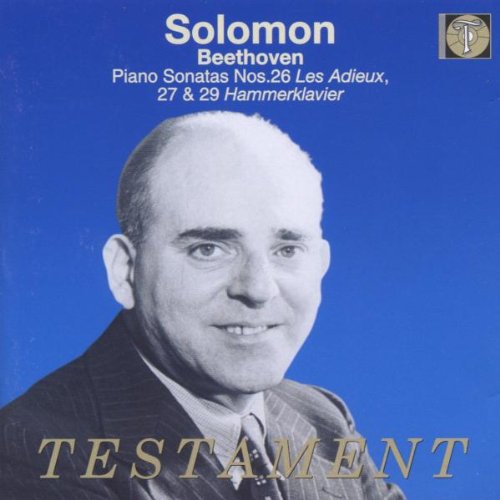 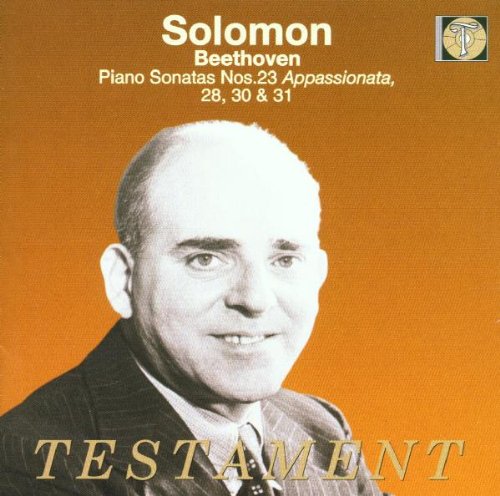 | Solomon (18) 1951 – 1956 - HMV/EMI Solomon Cutner was one of the first mononymous artists of the 20th century, well ahead of Prince, Madonna, Björk, and Sting – and a considerably better Beethoven pianist than all of them to boot. His Beethoven was very, very highly regarded and since he apparently broadcast the entire cycle of the 32 piano sonatas for the BBC, one wonders if those tapes might not appear one day. Meanwhile he managed to record sonatas Nos.1, 3, 7, 8, 17, 18, 21 – 23, 26 – 32 for HMV/EMI (as with Arrau and Gieseking, it was Walter Legge at work again!) before a stroke took the use of his right arm and his career… which Solomon survived by 32 years living until the ripe age of 85 when he died in 1988. As with Gieseking, his EMI “Icon” box is no good for Beethoven purposes, brining just 7 sonatas together. The old EMI “References” set at least conveniently couples the last six sonatas. The Testament label issues (on five individual CDs) are the best—indeed the only—bet: Quality, which has its price. (A wonderful Solomon discography can be found here!) Availability:
| ||||||||||||||||||||
  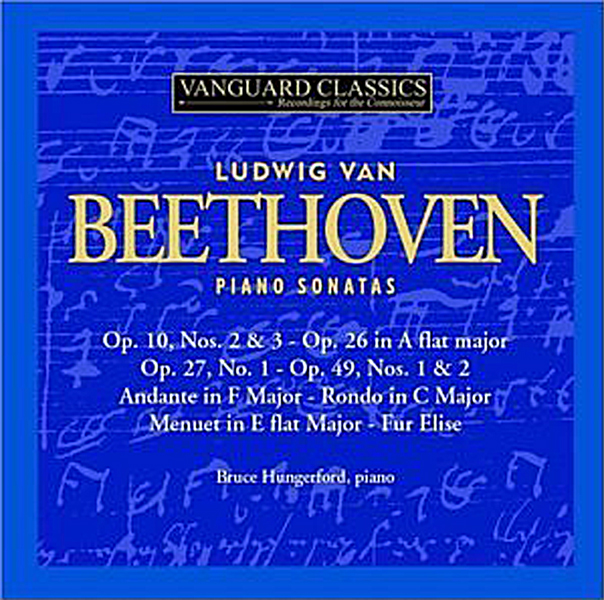  | Bruce Hungerford (18 [22?]) 1967 – 1976 - Vanguard Quoted from the website of Piano Classics, which has conveniently re-issued Hungerford’s Beethoven in a 5-CD set: Born in Australia Bruce Hungerford (1922-1977) studied with the legendary Ignaz Friedman in Sydney. His move to the USA brought him in contact with Myra Hess, who gave him valuable coaching, and later with Carl Friedberg. His prodigious qualities caught the attention of the Solomon brothers of the American Vanguard Classics label who contracted him for a complete Beethoven cycle recording. Sadly Hungerford died in a car accident halfway the project… Hungerford’s Beethoven is powerful, full of dramatic contrasts and effects, but also of great tenderness and wit, the full spectrum of Beethoven’s genius and humanity. Apart from his superb pianism and musicianship, Hungerford is also remembered as a professional palaeontologist and Egyptologist. Hungerford managed to record sonatas Nos. 1, 2, 4-8, 12-14, 17, 19-21, 24, and 30-32 as well as several smaller piano pieces which Piano Classics also includes. Several sources speak to 22 recorded sonatas, that are the legacy of Hungerford… while this set contains only 18. I’m tracking the discrepancy down and will make not here, if and when I succeed in doing so. Availability:
| ||||||||||||||||||||
  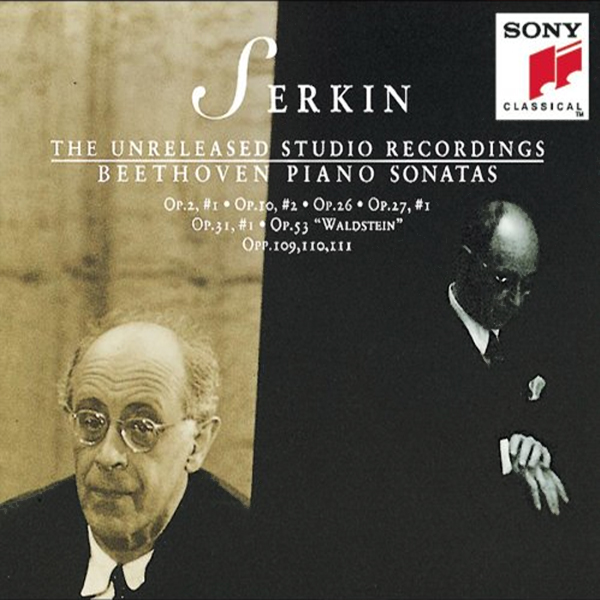 | Rudolf Serkin (17) 1960 – 1980 - CBS/Sony Rudolf Serkin recorded 17 of Beethoven’s Piano Sonatas for CBS/Sony Classical which can (only, lamentably, compressed, but cheaply!) be had on the bare-bones Sony Masters series which, wherever there are doublings in mono and stereo, opts for the latter versions. The sonatas included are Nos. 1, 6, 8, 11-14, 16, 21, 23, 24, 26, 28-32. Since those are still middle-to-late and not too-late-Serkin (who was in decline by then, to which his recordings for DG attest), that’s OK, although the mono is still considered superior by many listeners. These were (and perhaps still are) considered monumental Beethoven interpretations, especially on the western side of the Atlantic. The set also includes his Beethoven concerto recordings with the Philadelphia Orchestra / Ormandy (1, 2, 4*) and New York Philharmonic / Bernstein (3, 5), the Diabelli Variations and other assorted pieces. Opus 110 is included in a 1960 and 1971 version. The set was amended with an older set of “unreleased studio recordings” for Sony (which his son, pianist Peter Serkin, greenlighted for release), which contains sonatas Nos. 1, 6, 12, 13, 16, 21, and 30-32, of which the first four sonatas and an alternative take of 31 have made it onto the new compilation. With nine sonatas on the “Unreleased” set would, by my arbitrary standard, qualify it as an incomplete set of its own… Since it is entirely (or mostly) contained on the two larger Serkin collections, I list it not separately but here, partly because it’s said to be in better sound than the new edition. (An earlier set on Music & Arts of the 1945-1952 recordings for American Columbia only contains seven sonatas, so it doesn’t make the cut.) The "Columbia Legends" contains all the stereo sonatas but the earlier (better) op.110 – and none of the concertos. Serkin wasn’t struck by lightning to prevent him from completing a complete cycle… apparently it was his reverence of Beethoven that stopped him. At least the anecdote goes that he refused to perform Beethoven sonatas that he couldn’t play in Beethoven’s own indicated fingerings. (Never mind that pianos were built differently, then.) * The Third and Fifth with that combo were in mono, hence the replacement with the Bernstein versions. Availability:
| ||||||||||||||||||||
 | Wilhelm Kempff "Wartime" (16) 1940 – 1943 - APR Mark Obert Thorn engineered this set of the 16 wartime recordings of Beethoven Sonatas for Grammophon from the darly 40s. Availability:
| ||||||||||||||||||||
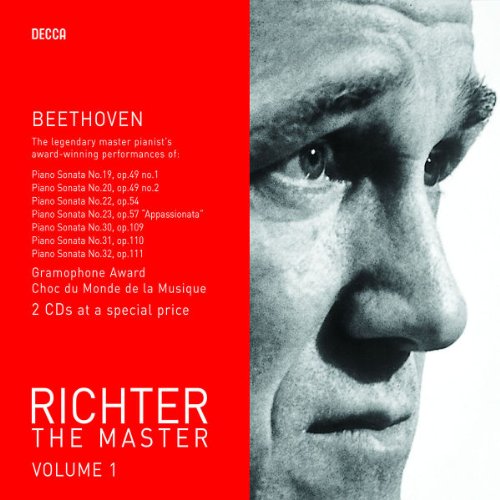 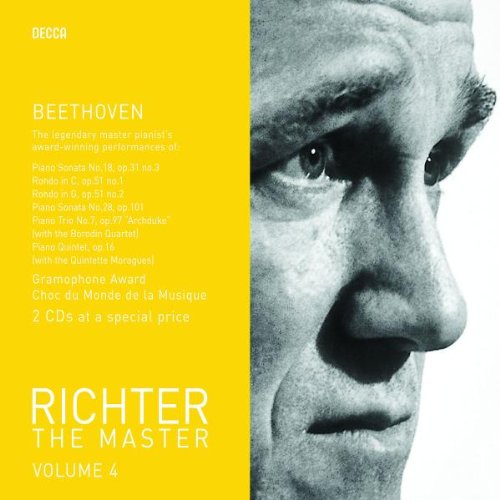 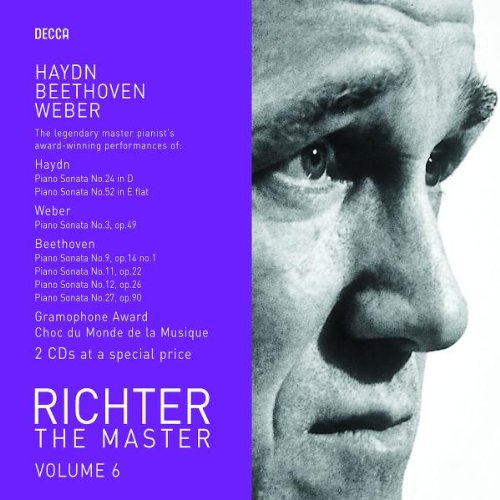 | Sviatoslav Richter “Decca” (13) 1986 – 1992 - Philips/Decca Richter was not intended to slip into the mix, actually, but with the cut-off at 9 sonatas, on one label, Sviatoslav Richter’s Beethoven for Philips (now Decca) becomes part of this list. Collected on the “Richter, The Master” edition, volume 1, volume 4 (both all Beethoven), and volume 6 (with hints of Haydn & Weber) bring together on 6 CDs Sonatas 9, 11, 12, 18-20, 22, 23, 27, 28, and 30-32. That’s more than half of the 23 sonatas that Richter elected to perform at all of Beethoven. Availability:
| ||||||||||||||||||||
 | Hans Richter-Haaser (13) 1959 – 1964 - HMV/EMI/Erato Totally underrated, almost forgotten, is the fine pianist Hans Richter-Haaser. Born in 1912, he fell right between the generations of piano Titans born in the 1880s (A.Schnabel, W.Backhaus, E.Fischer, A.Rubinstein et al.) and the young Gods born in the 1930s (F.Gulda, A.Brendel, G.Gould, Van Cliburn etc.) and on top of that he had to contend against the slightly younger or slightly older Horowtizes, Arraus, Serkins, Curzons, Richters and Michelangelis. In the first volume of Joachim Kaiser’s “Great Pianists of our Time” he was included… in the second volume had had already landed on the cutting room floor. He recorded Brahms with Karajan and Beethoven for Philips, but not much of his smallish recorded output has made it into the CD age— and most of that is out of print by now. His recordings for Walter Legge include Sonatas 1-3, 16-18, 22, 26, 27, 29-32, the Diabelli Variations, Concertos 3-5 with Giulini (3) and Kertész (4, 5)and the Philharmonia Orchestra, the op.77 Fantasy and the two op.51 Rondos. If you like the Beethoven of, say, Backhaus: understated, secure, sometimes severe, very tasteful, with zero “interpretation”, and fully in control of the music. Then Richter-Haaser might be for you. That said, I greatly prefer the earlier recordings of his for Philips (at last re-issued on Decca), but those include only six sonatas so they don’t make the cut for this list. Availability:
| ||||||||||||||||||||
Sviatoslav Richter “Prague” (11) 1959 – 1986 - Praga (Digitals) These Richter recordings, from between 1959 and 1986, are all live… They’re enough to include in this list, even if I have to find out if there’s another continuity, other than label, to these performances (such as location). Availability:
| |||||||||||||||||||||
 | Claudio Arrau “0” (9 + 2) 1947 – 1960 - HMV/EMI This is the reason my threshold is “9” sonatas… an early set of Arrau’s, recorded for HMV (as everyone seemed to do, at the time) and last seen on EMI’s “Claudio Arrau Beethoven Edition”, a 5-CD set that also includes the five Piano Concertos (Philharmonia Orchestra, Alceo Galliera conducting) and the 32 Variations WoO 80. The sonatas included are Nos. 14 (“Moonlight”), 18, 21 (“Waldstein”), 22, 23 (“Appassionata”), 26 (“Les Adieux”), 28, 31, and 32—recorded between 1947 (No.18) and 1960 (Nos. 22 & 23, which are the only two sonatas in stereo in this set.) There are also nine sonatas of Arrau’s HMV Beethoven on the mixed-composer “Icon” set. If you think that those are the same to be found in the “Beethoven Edition” box, perish that thought. The former (“Icon”) box contains Sonatas Nos.7 (1957; but there exists also one recorded in 1951) and 24, but not 14 and 18 which are in the “Beethoven Edition”. So there are 11 different Sonatas that Arrau recorded for HMV/EMI but it would mean getting both sets to get them all, instead of 9. On the upside, the Icon box is available, the LvB Edition is not. A kindly & most erudite Arrau & LvB Sonata expert points out that Arrau has also recorded sonatas 8, 14, 23, 26 & 29 for American Decca in 1954 which were released as part of The Liszt Legacy on DG. This adds two sonatas not recorded for EMI, nos. 29 & 8, which makes a hypothetical total of 13 sonatas to be gleaned from 1947-1960 Arrau. Availability:
|
This listing above could, maybe should contain the Beethoven sonatas Bruno Leonardo Gelber recorded for Denon on six volumes containing 19 sonatas (1, 3, 5-8, 13-15, 17, 18, 20, 21, 23, 25-28 & 32). As long as I don't inlcude them, I will point to the "Great" in "Great Incomplete Cycles" as my excuse not having done so yet.
* If you count, as I did, Backhaus II and Arrau II as complete, despite one and two (respectively) missing sonatas. I do not count Walter Gieseking (tapes of 4, 5, 7, 20, 22 for a radio cycle are lost, a studio cycle for EMI was missing seven sonatas when he died), Wilhelm Kempff "0" (Polydor, opp.2/3, 22, 27/1, 28, 31/2, 101 missing).
Part 1: 1935 - 1966
Part 2: 1967 - 1975
Part 3: 1977 - 1989
Part 4: 1990 - 1996
Part 5: 1996 - 1999
Part 6: 2000 - 2005
Part 7: 2006 - 2009
Ronald Brautigam Special
Part 8: 2010 - 2013
Part 9: 2014 and onward
If you have additional information about recording dates, availability, cover art -- or corrections and additions -- your input is much appreciated.
This survey is meant to list all complete sets of Beethoven’s Piano Sonatas and their availability in different markets, not to review them. If you are looking for recent releases, like the Ponelle-filmed cycle of Barenboim’s Beethoven Sonatas, or his "Beethoven for All" set, they are included with the sets of which they are actually re-releases.
An Index of ionarts Discographies
Follow @ClassicalCritic

Hello, again.
ReplyDeleteI commented a couple of years back and promised to check the Bernard Roberts disks. The direct-to-disk cycle was recorded in 1978 and 1979, and is not Digital (because it is direct to disk). The cycle on CDs (which I don't own) is marked as DDD, so it IS digital. However, the Hammerklavier was recorded simultaneously by both direct-to-disk, digital and analogue means, because a "comparison" set was released. So it is possible that all the performances were also recorded digitally (although that would be surprising, given the date). However, a comparison of the timing for the third movement of the Hammerklavier in the digital box (17:58) with that of the D2D record (and it's variants) (16:50) demonstrates unequivocally that they are two different performances. I therefore conclude that Roberts recorded the cycle twice.
You also note the incomplete cycle by Hungerford. For some reason (I could ask them, I suppose), Piano Classics left four sonatas (9, 10, 18 and 25) and one short piece (WoO53) off their CD box. Three of the missing sonatas (9, 10 and 18) were on a later LP, but 25 was on the same LP as the Moonlight... so it doesn't make much sense. Perhaps they just mislaid a CD?!
You really should try the Pristine transfers!
Duncan
Many thanks for the comprehensive list. Pretty impressive.
ReplyDeleteThanks Mr. Lobos for the compliment and thanks especially Duncan Peppercorn, for your extensive information which is much appreciated. Sorry that I saw it only now (I'm not informed of comments and must happen on them by chance). Will digest it and put it to good use.
ReplyDeleteAll the best,
Jens
A bit more...
ReplyDeleteYou should perhaps note the 12 sonatas that Kurt Appelbaum recorded for Westminster in the early 50s. There's a bit of info here:
http://www.soundfountain.com/amb/treasures.html#APPELB
I'm listening to the Hammerklavier at the moment, and although his technique isn't quite up to it, his intellect seems to be (it certainly "speaks" eloquently). The record is in execrable condition, as most early Westminsters are!
Drop me a line if you want any more Beethoven sonata information. I'm easy to find on LinkedIn.
D
zippy or mega links please
ReplyDeleteWhat, Anonymous, are zippy or mega links?
ReplyDeleteThanks for the info, Peppercorn.
ReplyDeleteIt seems that 3/8 cycle never made it off the LPs?
Melvyn Tan recorded 18 sonatas in 5 CD at The fortepiano.
ReplyDeletehttp://bayreuthclassical.blogspot.com/2018/03/beethoven-piano-sonatas-melvyn-tan.html?m=1
Well done, but not indispensable.
Thanks for the hint re: Melvyn Tan.
ReplyDeleteI'll look into adding that, even if it might take me a little time.
Thanks so much for the comment!
And don't forget Paul Komen - also on fortepiano!
ReplyDelete